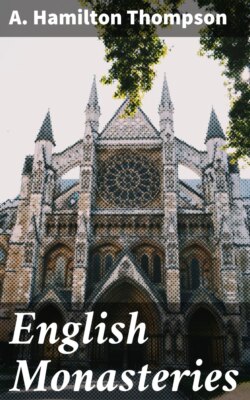Читать книгу English Monasteries - A. Hamilton Thompson - Страница 12
На сайте Литреса книга снята с продажи.
§ 9.
ОглавлениеTable of Contents
There were also certain priories founded in subordination to foreign houses. Thus Bec had a priory at St. Neots in Huntingdonshire; the abbey of Mont-Ste-Cathérine at Rouen had one at Blyth in Nottinghamshire. Both these houses contained several monks: in the thirteenth century there were fourteen at Blyth, all probably foreigners, and many of them sent from the parent house for a change of air. But there were also a large number of monastic possessions known as priories, which were not strictly conventual, but were simply manors in the possession of alien monasteries, on which a prior or custos, sent from the mother abbey with another monk as his socius, resided for a portion of the year, practically as estate agent. Sometimes he was allowed, as at Ecclesfield in Yorkshire, a priory of Saint-Wandrille, to serve the cure of the parish church; but this was not common. Where these small 'alien priories' are known to have existed, we need not expect to find any trace of monastic arrangements in the parish church. Still less need we look for traces of a cloister. During the hundred years' war with France, the alien priories were repeatedly confiscated by the Crown, and before their final confiscation in 1414 many had been granted to English charterhouses, chantry colleges, and similar foundations. Conventual priories, such as Blyth and St. Neots, were continued as independent monasteries under English priors.
